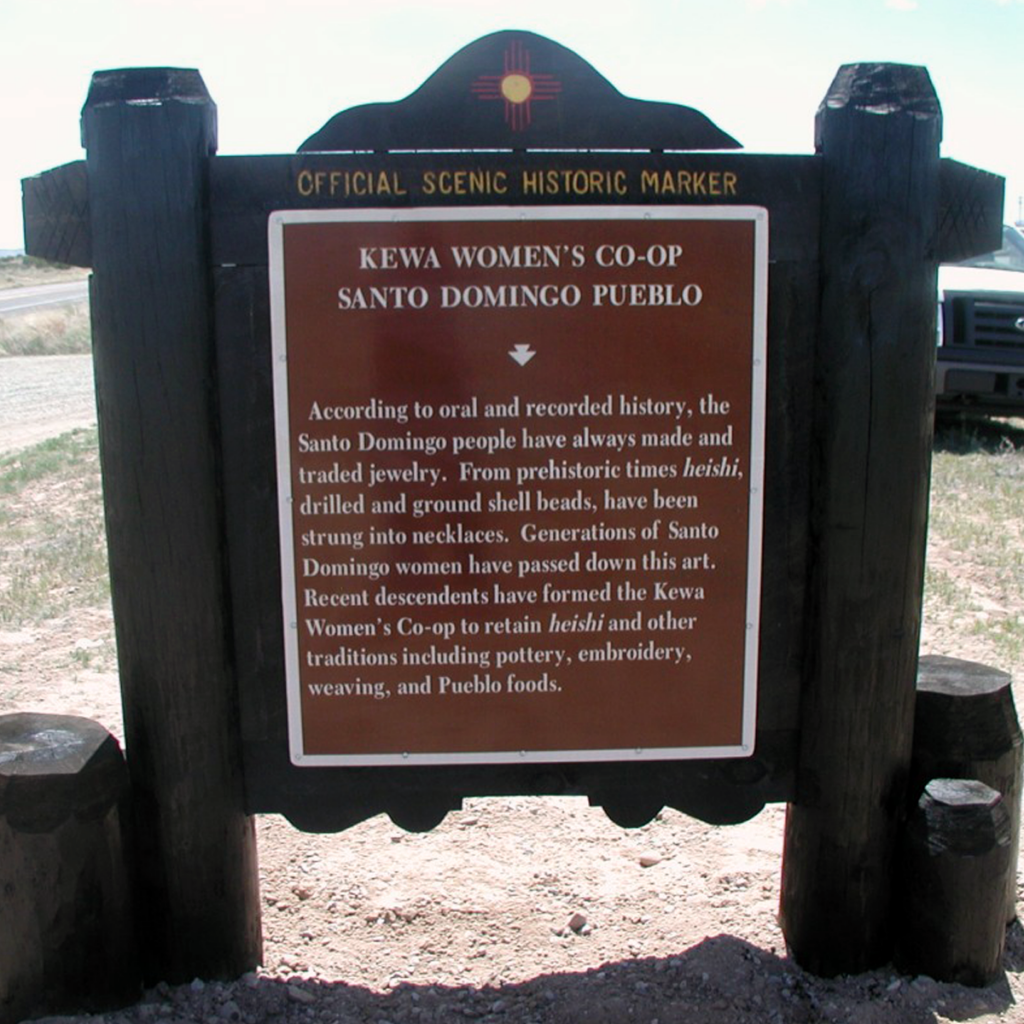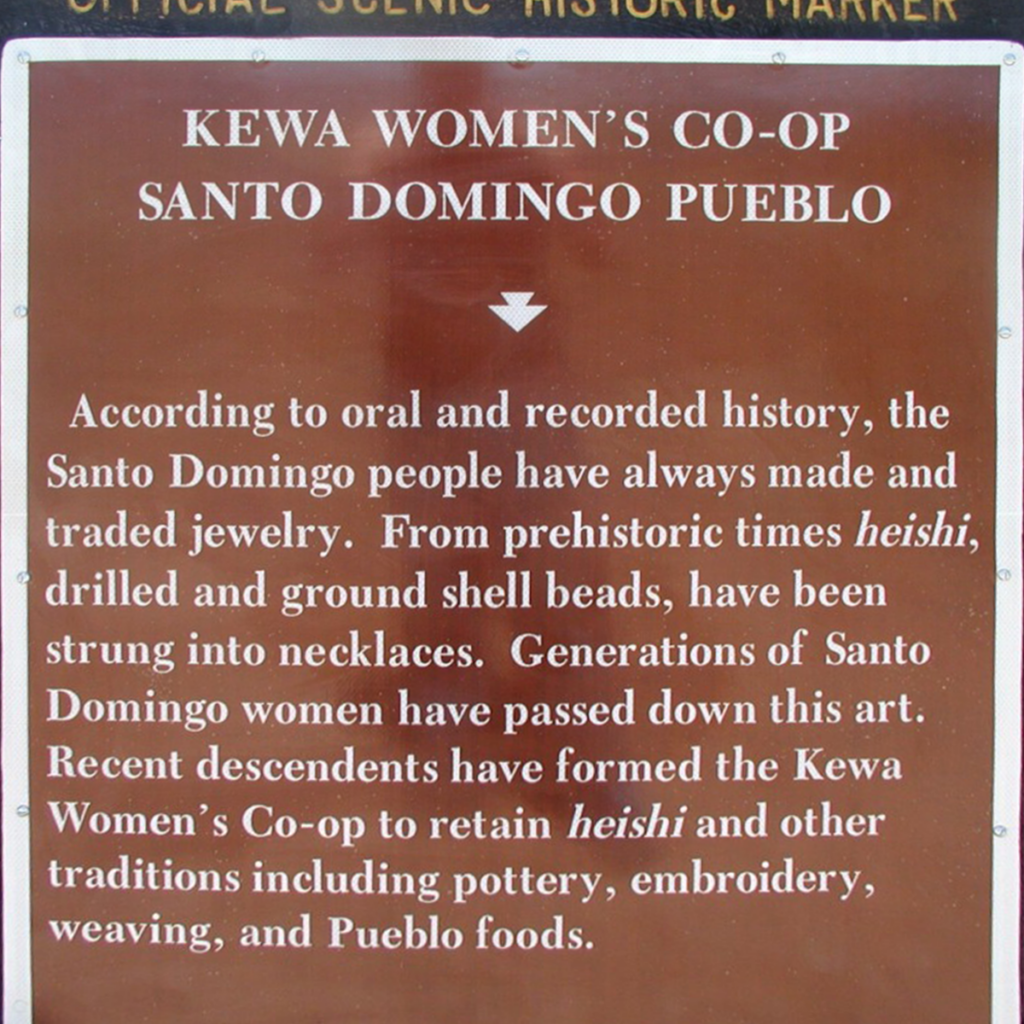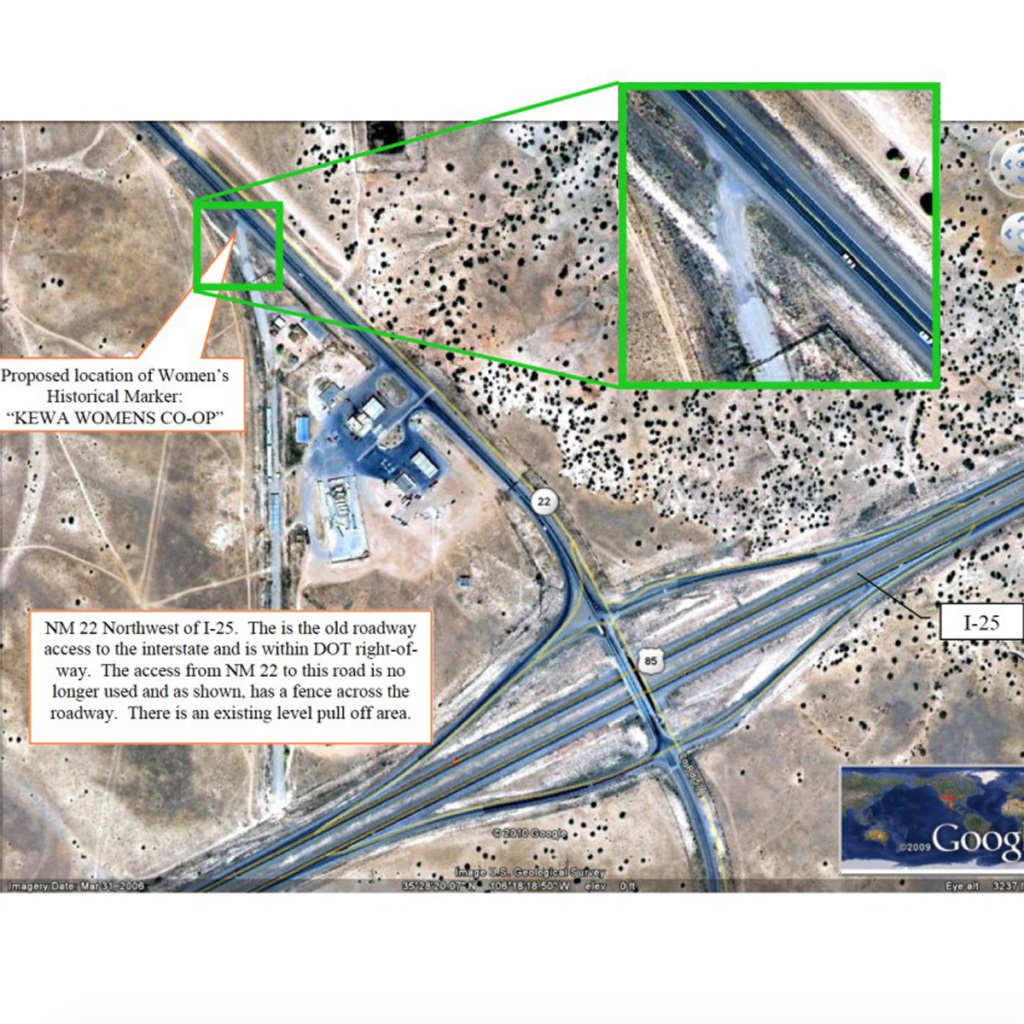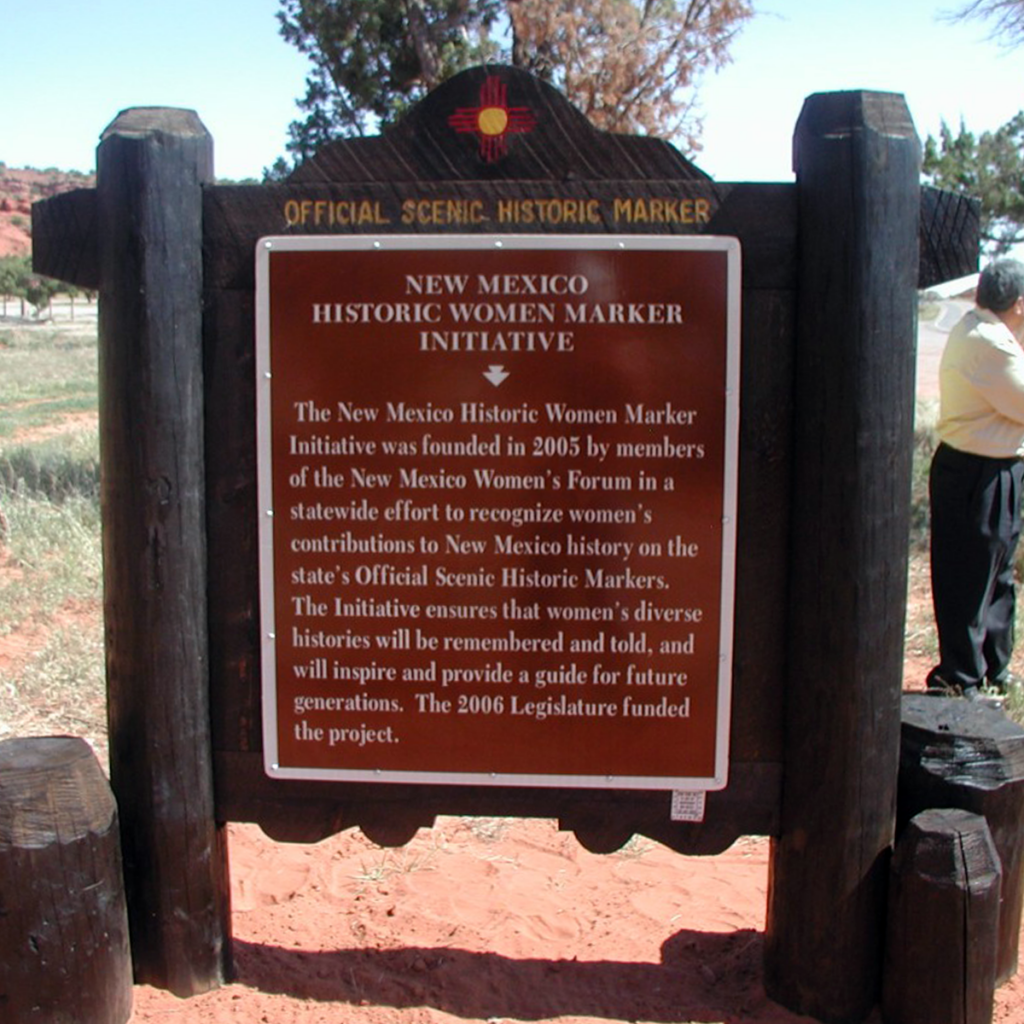Kewa Women’s Co-op historic marker.
Kewa Women’s Co-op
Mexican Period (1821 - 1848) When Mexico achieved independence from Spain in 1821, a large region including current-day New Mexico became a province of Mexico. After the Mexican-American War, the area was ceded to the United States under the Treaty of Guadalupe Hidalgo in 1848.
|
Pre-Colonial Before Europeans arrived in today’s Southwest, artifacts and architectural remains indicate a long period of human occupation, during which complex cultures developed and became the basis of many communities in New Mexico today.
|
Spanish Colonial (1540 - 1821) In 1540, Spaniard Francisco Coronado explored the Southwest, leading to Spanish settlement and colonization of the region now known as New Mexico.
|
Statehood (1912 - present) After years of debate, on January 6, 1912, New Mexico became the 47th state admitted to the United States of America.
|
Territorial Period (1848 - 1912) Already part of the United States under the terms of the Treaty of Guadalupe Hidalgo signed in 1848, New Mexico was officially designated a territory in 1850.
|
Through the Kewa Women’s Co-op, women of the Santo Domingo Pueblo maintain cultural traditions–heishi jewelry making, pottery, embroidery, weaving, traditional foods–passing traditions on to community members, with younger women learning through observation.
According to oral and recorded history, the Santo Domingo people have consistently made and traded jewelry, including heishi, a shell drilled and ground into beads and strung into necklaces. Generations of Santo Domingo women have passed down this art. Recent descendents have formed the Kewa Women’s Co-op to retain heishi and other traditions unique to Santo Domingo.
Kewa or Santo Domingo is a Keresan speaking Pueblo located along the Rio Grande in North Central New Mexico. Considered one of the most traditional of the nineteen Pueblos, the Santo Domingo community has a long history of guarding their culture and customs from outsiders. Santo Domingos first encountered Europeans in 1598 when Don Juan de Oñate arrived in what is now New Mexico. In 1680, discontented with Spanish suppression of Pueblo religious and cultural beliefs, Santo Domingos, along with Pueblos from other villages, drove the Spanish out of New Mexico during the Pueblo Revolt.
Like other pueblo villages, Santo Domingo has struggled to preserve its culture and tradition. Among the many traditions that the Kewa Women’s Co-op is focused on preserving is heishi, a style of jewelry that pre-dates European contact and one that the Santo Domingos are renowned for.
To make heishi, Santo Domingo jewelers shape beads from a variety of shells originating from the Gulf of California and the Pacific Ocean, including olivella, spiny oyster, clam, and abalone. Some jewelers use traditional tools while others use power saws, drills, grinding wheels, and sanders. In the traditional way, jewelers use pump drills and further refine shells by grinding them against a sandstone slab, a careful process that if done incorrectly may result in damaged beads. Necklaces can be single or multi-strand, and are held together with a metal clasp or band of thread. These shell beads are often interspersed with turquoise or coral beads.
Jewelry making in Santo Domingo is generally a family affair, with different family members performing different tasks. Women have played an integral role in keeping jewelry making alive and it continues to be a valuable source of income. Although many Santo Domingos have sought employment outside the community, many continue to work as jewelers and artists. One description from the 1970s describes women drilling shells with a reciprocating drill while watching soap operas.
In addition to maintaining heishi, women have played an integral role in the upkeep of pottery, embroidery, weaving, and traditional foods, each of these traditionally gender-specific tasks. Through example, these traditions are passed on to community members, with younger women learning through observation.
Sources:
Bedinger, Margery. Indian Silver: Navajo and Pueblo Jewelers. Albuquerque: University of New Mexico Press, 1973.
Cirillo, Dexter. Southwestern Indian Jewelry. New York: Abbeville Press, 1992.
Tisdale, Shelby. Fine Indian Jewelry of the Southwest: The Millicent Rogers Museum Collection. Santa Fe: Museum of New Mexico Press, 2006.
Turnbaugh, William A. and Sarah Peabody Turnbaugh. Indian Jewelry of the American Southwest. Atglan, PA: Schiffer Publishing, 1996.










